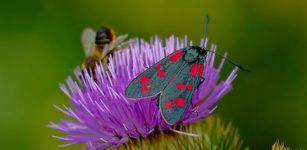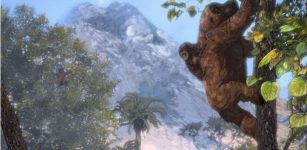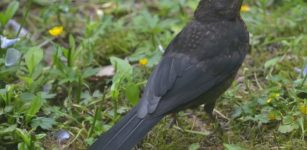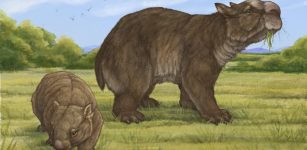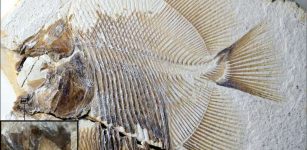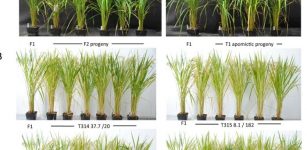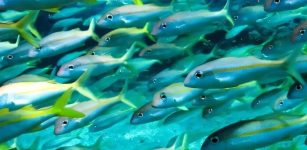Bees Can Reverse Aging, Solve Complex Mathematical Problems Faster Than Supercomputers And Recognize Faces!
MessageToEagle.com – Bees are fascinating animals! Not only are they capable of reversing aging, but they can also solve complex mathematical problems faster than supercomputers!
That is not all! Bees can also recognize human faces!
Our wonderful nature never ceases to amaze us! Let us explore the remarkable world of these incredible animals…
How can bees reverse aging?
Scientists at Arizona State University have discovered that older honey bees effectively reverse brain aging when they take on nest responsibilities typically handled by much younger bees.
While current research on human age-related dementia focuses on potential new drug treatments, researchers say these findings suggest that social interventions may be used to slow or treat age-related dementia.
In a study published in the scientific journal Experimental Gerontology, a team of scientists from ASU and the Norwegian University of Life Sciences, led by Gro Amdam, an associate professor in ASU’s School of Life Sciences, presented findings that show that tricking older, foraging bees into doing social tasks inside the nest causes changes in the molecular structure of their brains.
“We knew from previous research that when bees stay in the nest and take care of larvae – the bee babies – they remain mentally competent for as long as we observe them,” said Amdam.
“However, after a period of nursing, bees fly out gathering food and begin aging very quickly. After just two weeks, foraging bees have worn wings, hairless bodies, and more importantly, lose brain function – basically measured as the ability to learn new things.
We wanted to find out if there was plasticity in this aging pattern so we asked the question,
‘What would happen if we asked the foraging bees to take care of larval babies again?”
During experiments, scientists removed all of the younger nurse bees from the nest – leaving only the queen and babies.
When the older, foraging bees returned to the nest, activity diminished for several days. Then, some of the old bees returned to searching for food, while others cared for the nest and larvae. Researchers discovered that after 10 days, about 50 percent of the older bees caring for the nest and larvae had significantly improved their ability to learn new things.
Amdam’s international team not only saw a recovery in the bees’ ability to learn, they discovered a change in proteins in the bees’ brains.
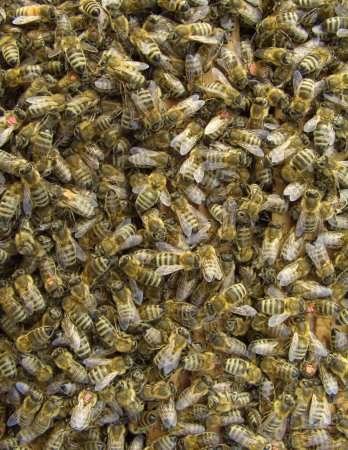
When comparing the brains of the bees that improved relative to those that did not, two proteins noticeably changed. They found Prx6, a protein also found in humans that can help protect against dementia – including diseases such as Alzheimer’s – and they discovered a second and documented “chaperone” protein that protects other proteins from being damaged when brain or other tissues are exposed to cell-level stress.
In general, researchers are interested in creating a drug that could help people maintain brain function, yet they may be facing up to 30 years of basic research and trials.
“Maybe social interventions – changing how you deal with your surroundings – is something we can do today to help our brains stay younger,” said Amdam.
“Since the proteins being researched in people are the same proteins bees have, these proteins may be able to spontaneously respond to specific social experiences.”
How can bees solve complex mathematical problems faster than supercomputers?
Bumblebees can find the solution to a complex mathematical problem which keeps computers busy for days.
Scientists at Queen Mary, University of London and Royal Holloway, University of London have discovered that bees learn to fly the shortest possible route between flowers even if they discover the flowers in a different order. Bees are effectively solving the ‘Travelling Salesman Problem’, and these are the first animals found to do this.
The Travelling Salesman must find the shortest route that allows him to visit all locations on his route. Computers solve it by comparing the length of all possible routes and choosing the shortest. However, bees solve it without computer assistance using a brain the size of grass seed.
Professor Lars Chittka from Queen Mary’s School of Biological and Chemical Sciences said: “In nature, bees have to link hundreds of flowers in a way that minimises travel distance, and then reliably find their way home – not a trivial feat if you have a brain the size of a pinhead! Indeed such travelling salesmen problems keep supercomputers busy for days. Studying how bee brains solve such challenging tasks might allow us to identify the minimal neural circuitry required for complex problem solving.”
The team used computer controlled artificial flowers to test whether bees would follow a route defined by the order in which they discovered the flowers or if they would find the shortest route. After exploring the location of the flowers, bees quickly learned to fly the shortest route.
“There is a common perception that smaller brains constrain animals to be simple reflex machines. But our work with bees shows advanced cognitive capacities with very limited neuron numbers. There is an urgent need to understand the neuronal hardware underpinning animal intelligence, and relatively simple nervous systems such as those of insects make this mystery more tractable,” said Dr Mathieu Lihoreau from Queen Mary colleague.
Bees can recognize human faces
In 2005, when Adrian Dyer from Monash University trained the fascinating insects to associate pictures of human faces with tasty sugar snacks, they seemed to be able to do just that. But Martin Giurfa from the Université de Toulouse, France, suspected that that the bees weren’t learning to recognise people.
He says, “Because the insects were rewarded with a drop of sugar when they chose human photographs, what they really saw were strange flowers. The important question was what strategy do they use to discriminate between faces,” explains Giurfa. Wondering whether the insects might be learning the relative arrangement (configuration) of features on a face, Giurfa contacted Dyer and suggested that they go about systematically testing which features a bee learned to recognise to keep them returning to Dyer’s face photos.
See also:
Humans Have Been Using Beehive Products For At Least 8,500 Years
Teaming up with Aurore Avargues-Weber, the team first tested whether the bees could learn to distinguish between simple face-like images. Using faces that were made up of two dots for eyes, a short vertical dash for a nose and a longer horizontal line for a mouth, Avargues-Weber trained individual bees to distinguish between a face where the features were cramped together and another where the features were set apart. Having trained the bee to visit one of the two faces by rewarding it with a weak sugar solution, she tested whether it recognised the pattern by taking away the sugar reward and waiting to see if the bee returned to the correct face. It did.
So the bees could learn to distinguish patterns that were organised like faces, but could they learn to “categorize” faces? Could the insects be trained to classify patterns as face-like versus non-face like, and could they decide that an image that they had not seen before belonged to one class or the other?
To answer these questions, Avargues-Weber trained the bees by showing them five pairs of different images, where one image was always a face and the other a pattern of dots and dashes.
Bees were always rewarded with sugar when they visited the face while nothing was offered by the non-face pattern. Having trained the bees that ‘face-like’ images gave them a reward, she showed the bees a completely fresh pair of images that they had not seen before to see if the bees could pick out the face-like picture. Remarkably they did.
The bees were able to learn the face images, not because they know what a face is but because they had learned the relative arrangement and order of the features.
But how robust was the bees’ ability to process the “face’s” visual information? How would the bees cope with more complex faces? This time the team embedded the stick and dot faces in face-shaped photographs.
Would the bees be able to learn the arrangements of the features against the backgrounds yet recognize the same stick and dot face when the face photo was removed? Amazingly the insects did, and when the team tried scrambling real faces by moving the relative positions of the eyes, nose and mouth, the bees no longer recognized the images as faces and treated them like unknown patterns.
Bees do seem to be able to recognize face-like patterns, but this does not mean that they can learn to recognize individual humans. They learn the relative arrangements of features that happen to make up a face-like pattern and they may use this strategy to learn about and recognize different objects in their environment.
What is really amazing is that an insect with a microdot-sized brain can handle this type of image analysis when we have entire regions of brain dedicated to the problem. Giurfa explains that if we want to design automatic facial recognition systems, we could learn a lot by using the bees’ approach to face recognition.
MessageToEagle.com based on information provided by Arizona State University, Royal Holloway, University of London, Journal of Experimental Biology


